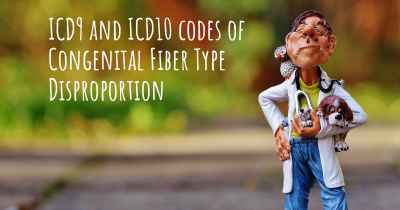Is Congenital Fiber Type Disproportion hereditary?
Here you can see if Congenital Fiber Type Disproportion can be hereditary. Do you have any genetic components? Does any member of your family have Congenital Fiber Type Disproportion or may be more predisposed to developing the condition?

Congenital Fiber Type Disproportion (CFTD) is a rare genetic muscle disorder characterized by muscle weakness and low muscle tone. It is believed to have a hereditary component, although the exact inheritance pattern is not fully understood. Research suggests that CFTD may be caused by mutations in certain genes involved in muscle development. However, more studies are needed to determine the specific genetic factors and inheritance patterns associated with this condition.
Congenital Fiber Type Disproportion (CFTD) is a rare genetic muscle disorder that affects the structure and function of skeletal muscles. It is characterized by a significant size difference between two types of muscle fibers, namely type 1 (slow-twitch) and type 2 (fast-twitch) fibers. While the exact cause of CFTD is not fully understood, it is believed to have a genetic basis.
Research suggests that CFTD can be hereditary, meaning it can be passed down from parents to their children. Several genetic mutations have been identified as potential causes of CFTD, including mutations in the genes ACTA1, TPM3, TPM2, and SEPN1. These mutations are inherited in an autosomal dominant or autosomal recessive manner.
In cases of autosomal dominant inheritance, a child has a 50% chance of inheriting the mutated gene from an affected parent. This means that if one parent carries the gene mutation, each child they have has a 50% chance of inheriting the mutation and developing CFTD. However, it is important to note that not all individuals with the gene mutation will necessarily develop the disorder, as there can be variations in the severity and expression of the condition.
Autosomal recessive inheritance occurs when both parents carry a copy of the mutated gene. In this case, each child has a 25% chance of inheriting two copies of the mutated gene, resulting in the development of CFTD. If only one parent carries the gene mutation, the child will be a carrier of the mutation but will not typically show symptoms of the disorder.
It is worth mentioning that while CFTD can be hereditary, there have also been cases where individuals with no family history of the disorder have been diagnosed with it. This suggests that there may be other factors, such as spontaneous genetic mutations or environmental influences, that can contribute to the development of CFTD.
Genetic testing can be conducted to identify specific gene mutations associated with CFTD. This can help in determining the hereditary nature of the disorder within a family and provide valuable information for genetic counseling.
It is important for individuals with a family history of CFTD or those who suspect they may be carriers of the gene mutation to consult with a healthcare professional or a genetic counselor. They can provide personalized information, guidance, and support regarding the hereditary aspects of CFTD and its implications for family planning.








